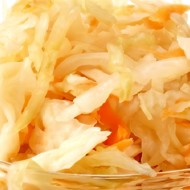
Sauerkraut
⏳ Time
30 minutes + 5 days
🥕 Ingredients
4
🍽️ Servings
6
Description
If you need the cabbage to ferment faster, place a crust of rye bread under the leaves. The cabbage will ferment twice as quickly!
Ingredients
- White Cabbage - 1½ kg
- Spices - to taste
- Carrot - 5.3 oz
- Rock Salt - 1.1 oz
Step by Step guide
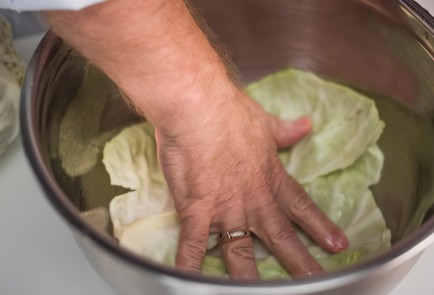
Step 1
Remove the top leaves from the cabbage and use them to line the bottom of the container where the cabbage will be fermented. This is necessary to prevent the cabbage from touching the bottom. Later, when you need to pierce the cabbage, the leaves will protect the barrel (if using one) or another container from damage. Sprinkle any spices underneath the leaves.
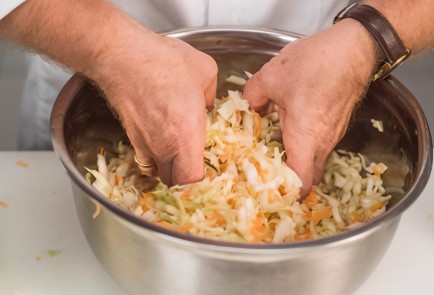
Step 10
After one or two hours, open the cabbage again, insert your hands into the container, and stir it to release the gases. This should be done for three consecutive days. Throughout this time, the cabbage will ferment at room temperature.
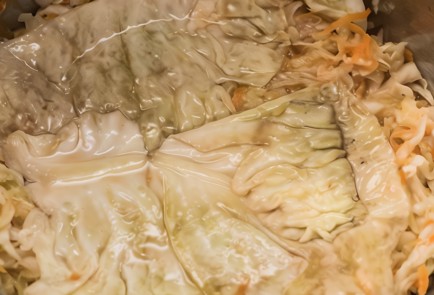
Step 11
On the third day, the cabbage should start to froth — this means it's time to put it in the refrigerator. After two days, the cabbage is ready to eat, and after another two days, it is fully fermented. In total, the leisurely fermentation process takes about five to seven days. You can dress it with oil, add cranberries, and enjoy.
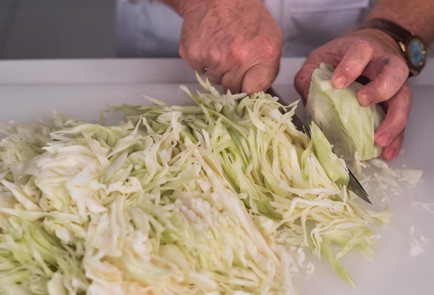
Step 2
Chop the cabbage — not too finely and not too coarsely. Remove the cores.

Step 3
Peel the carrot and grate it on the coarsest side of the grater. Add it to the cabbage.
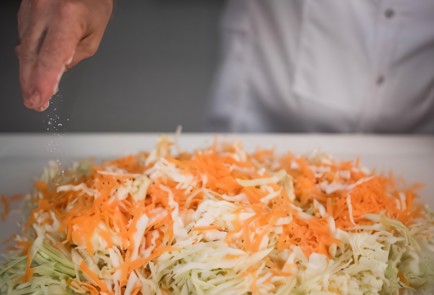
Step 4
Sprinkle salt evenly over the entire surface. Start by adding about 40–50 grams, mix it in, and taste — if the cabbage is moderately salty, add more salt. The cabbage should taste slightly over-salted.

Step 5
Mix the cabbage on a board or in a tray. You don’t need to literally knead the cabbage—just gently squeeze it with your hands to release some juice, then mix it with the carrots and immediately transfer it to a container for pickling. If you mash the cabbage too hard, it will release too much juice and become dry.

Step 6
Transfer the cabbage to the fermentation container by hand, pressing down each batch firmly against the bottom.

Step 7
Cover the cabbage on top with the same type of leaves that were placed at the bottom of the container. This is necessary to prevent the cabbage from darkening, as exposure to air is not beneficial for it.
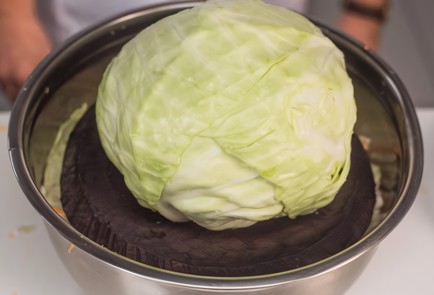
Step 8
Place a wooden board on the sheets and put a weight on top. You can cover the cabbage with a plate, but if it cracks and pieces fall into the cabbage, everything will have to be thrown away. Alternatively, you can place a wooden circle and a stone on top. If, within an hour to an hour and a half after placing the weight, the cabbage does not release juice and is not covered with it, you should take boiled or non-carbonated mineral water, add salt (so that it tastes overly salty), and pour it over the cabbage until it is completely submerged.
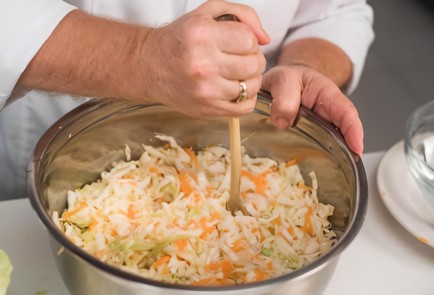
Step 9
After the first three hours, pierce the cabbage to the bottom with the handle of a wooden spoon to release gases. If the cabbage is not pierced, it will become bitter and sour. (The next day, remove the weight from the cabbage, pierce it again, and leave it covered with a cloth for an hour, then reapply the weight. If the next day there is too much brine and the cabbage is literally floating in it, replace the weight with a lighter option, but under no circumstances should you drain the brine!)
Cooked This Dish? Share Your Delicious Creation with the Community! 🥰
Snap a photo and let everyone see your culinary masterpiece. Inspire others and showcase your skills!
Users Photos
Leave a Comment
Please log in to leave a comment.